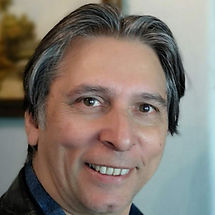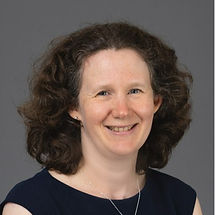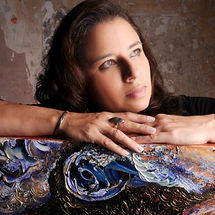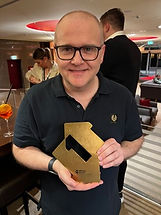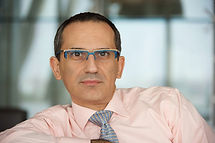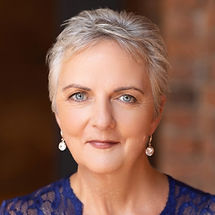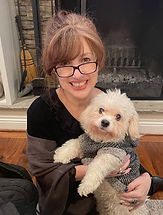Keep in touch by subscribing to our Museletter.
Full Member Directory
Search here for full members by keyword or browse all below.
251 results found
- Sam Conniff After Party - 5 May.
At 1pm BST on Thursday 5th May, Sam Conniff gave our 10-minute TAD Talk (The Arts Debate) on Creative Uncertainty. "That was amazing." Cynthia Pecking. Translator. Writer. Editor. "Thank you Sa - was fantastic." Kathryn Brammall "Love your energy and passion Sam." Gill Tiney "Thanks Sam, that was some great insight." Kulvinder Reyatt "Thanks Sam, that was great." Brian Warrens FRSA "That was great - so interesting. Would love to hear more." Anne Waldon "Thank you Sam, I'll be taking your uncertainty tolerance test." Matthew Chatfield "Best TAD Talk yet." Roxie Curry FRSA Access to the full talk is a benefits of subscription, but here is the 30 minute After Party. Mark Walmsley FRSA Chief Culture Vulture Arts & Culture Network www.ArtsAndCultureNetwork.com mark.walmsley@ArtsAndCultureNetwork.com
- No Words
The urban art of My Dog Sighs. You may remember I used this image found on a wall in Cardiff in Wales for one of our recent meetings at which our Ukrainian member Anna Denysenko was interviewed. I have since found out more about the artist and you'll find some more images below. My Dog Sighs has been a contemporary urban artist for 15 years. His style is characterised by the combination of melancholic and often naive portraiture with the use of found materials including abandoned food cans. He is known for painting eyes with an image within the pupil that reflects the narratives of the human condition. My Dog Sighs is recognised as one of the world’s leading street artists. His commissions include Wynwood Walls, Miami; Amsterdam Street Art Museum; Digital Vision, Shenzhen, China; Coventry Transport Museum; Discerning Eye, London; he has extensive work in private collections including Matt Damon. He has painted at all the world’s leading street art festivals and has headlined most of them. He is on the syllabus for some Mexican schools and is an exam paper subject for a Swedish exam board. He has been a guest on Radio 4’s Saturday Live, BBC’s One Show and Culture Show; had work in The Times, The Guardian; had features in Huffpost and Widewalls; and is regularly featured in global street art media ‘best murals’ articles. Inside: We Shelter Here Sometimes As a street artist My Dog Sighs is used to breaking the accepted norms and sharing his message directly in the public space. His recent project Inside was his most ambitious project to date, it pushed the boundaries of street art and demonstrated it can go way beyond a painting on a wall. Inside transformed a 3000 sq metre derelict building into an immersive world inhabited by the artist’s own creatures, dubbed his ‘Quiet Little Voices’. Like us, these creatures are not perfect nor are their lives perfect. They struggle, they make mistakes, they fail. But like us too, they don’t give up. Even among the decay they use their creativity to find hope – a powerful message in these turbulent times. Street artists are often perceived as ghosts, with only the results of their endeavours visible to the world. My Dog Sighs took these creatures, that started life as scribbled doodles in the margins of his sketchbooks and used them to represent different facets of his life. Replacing himself with these beings as a representation of his inner ‘Quiet Little Voices’, they embody a range of emotions from playful to melancholic. For the first time, My Dog Sighs moved into sculpture, fusing his visual language with light and sound installations, alongside the photorealistic paintings and naive characters that define his practice. No longer was the artist the creator, but his creations took on the mantle of ‘My Dog Sighs’ and as viewers people were welcomed ‘Inside’ the world of these ghosts. The anthropomorphic creatures were given free rein to take over the multi-storey space, finding shelter and creating their own language amongst the dimly lit corners. Inside responded to the building itself and found beauty amongst its dilapidated floors and crumbling walls. The project extended My Dog Sighs’ street art practice where he uncovers the beauty of these forgotten spaces and demonstrates the power of creativity to inspire and uplift communities. The artist worked closely with both sound experts from Portsmouth University and a renowned creative lighting company, VEL, to create a unique and immersive street art experience. My Dog Sighs released via his website a free series of educational packs designed to be used by teachers and students around the world. Taking inspiration from ‘Inside’, the packs provide young people with the creative tools needed to find hope in difficult situations and shows how they can use art to empower their local communities. Inside: We Shelter Here Sometimes attracted 10,000 visitors over a two week period. Tickets were £10 (concessions £5, under 18s free). 1,000 tickets were given away for free to people facing barriers to inclusion. My Dog Sighs is releasing a book and feature length documentary about ‘Inside’. He hopes to tour the ‘Quiet Little Voices’ alongside the launch of the book and film. mydogsighs.co.uk facebook.com/mydogsighs instagram.com/mydogsighs Mark Mark Walmsley FRSA AGSM Chief Culture Vulture Arts & Culture Network www.ArtsAndCultureNetwork.com
- What did Matz Skoog think?
An Arts and Culture Network testimonial from Matz Skoog. I recently met performance coach Matz Skoog for a 121 and he kindly shared his experience of his first visit to our random speed networking events. Mark Mark Walmsley FRSA AGSM Chief Culture Vulture Arts & Culture Network www.ArtsAndCultureNetwork.com
- The Art and Science of Random Speed Networking
The Science. 65% of new business opportunities and opportunities for partnership and collaboration come from referrals and recommendations. 82% of small businesses cite referrals as their main source of new business and opportunity. 85% of jobs are filled by referral. But there's more ... Referred opportunities are 4x more likely to close. The lifetime value of a referred business partner is 16% higher. Referred customers have a 37% higher retention rate. And best of all, a referred customer tends to be less price sensitive and less likely to shop around after receiving a referral from someone whose judgment they trust. And if you respond to a referred opportunity inside an hour, you are 60 times more likely to be successful. So you don't have to be a genius to recognise that the bigger your network becomes and the more relationships you can start and sustain, the more likely it is that you will be referred for a contract, a job ... or even a relationship. In medieval times, when plague was rampant, the advice to those who saw it on the horizon was ... "Leave early, go far, stay long." My advice for those who wish to grow their networks is, "Start early, engage deeply, don't stop." There is a now a dazzling array of options for those who wish to grow a referral network, from membership organisations like BNI (the biggest and most successful by far), to one-off local face-to-face events, to online networking events. At the Arts and Culture Network, we've taken the last of these one step further. We've made it quick, online and randomised. If you're like me, your heart sinks when you receive an invitation to a 4-hour webinar on Zoom. My instinct is that I will have other priorities when the date arrives and that it can't possibly be relevant and interesting to me for all 4 hours. We are all Zoomed out but it remains the case that online remotely accessed events are more convenient, much more affordable and much, much more sustainable. At the ACN, we recognise that we are all pressed for time so our events are short ... just one hour, during which we all get to meet up to 10 colleagues, at random, in a series of 5-minute 121s in break out rooms. It's fast, fun and very effective. We provide the opportunity for multiple quick connections, at which conversations are started and opportunities for collaboration explored. We've seen young people hired, artistic collaboration arranged and business deals closed. But if you're new to this type of event, it can be daunting so we've written a guide on how to get the most out of our events here: The Art Random speed networking online is a fun, fast and effective way to make new connections, quickly without leaving your desk. Make the connection, share contact details and then carry on the conversation and explore opportunities to collaborate afterwards ... then come back to meet more people next time. You may be a seasoned random speed networker in which case you will know all this and I apologise for preaching to the choir. If not ... and if you are unfamiliar with this event format it can come as a surprise. It certainly did to me first time around, but it works. It pays to be prepared and to follow the guidance below. Before At one of our events, you'll meet several people at random in a series of back-to-back 5-minute meetings either 1-2-1 or in small groups of 3 or 4 in Zoom breakout rooms. At the Arts and Culture Network, we like to do as many as possible inside an hour and we don't hang around so it's wise to prepare if you wish to make the most of the event. Please don't meet and drive. It doesn't work. Find a quiet, undisturbed location. Take a quick comfort break before the start. Start on mute with your camera on. Turn off your phone and close your email and social media accounts. It's only for an hour. Have a glass of water at hand, or something stronger if you're at all nervous. Log in 10 minutes early to avoid local technical glitches. Make sure your full name is in the corner of your video window. If someone wishes to follow up with you they'll struggle if it says "Sally's iPad" Use a laptop or desktop computer with a built in camera if you can, It's fiddly as hell on a phone or tablet. Reboot before the call and close all those tabs in your browser. They eat up bandwidth reloading adverts all the time. Make sure you are using the latest version of Zoom. Check your broadband connection (testmy.net is free) Position your laptop or desktop camera at eye level. We all look far better from above than below. Use a green screen and/or a virtual background if you have one, especially if it incudes your contact details. If you have neither of the above, don't worry but you can create one at Canva, free. Use a selfie light if you can. If not, have the available light in front of you to avoid being in silhouette. If you can't do that, draw the blinds or curtains behind you and turn all the room lights on. Test your microphone and headphones/speakers before the meeting. Zoom offers the chance to do this before you join the meeting. Use headphones with a built in microphone if possible, you'll hear and be heard much clearer. Zoom offers registered users the function of reducing background noise. Open audio settings and set this to high. We won't hear your dog barking or the builders then. Have your contact details ready to copy and paste into the chat. Have a notebook and pen handy. Please remember, we have a wide range of attendees in both junior and senior roles both client and supplier side in the arts and culture sector. Meetings are arranged completely at random. Please keep this in mind if you are paired with someone with whom you appear to have little in common.. Find common ground and offer to refer. "The true measure of a person is how they treat someone who can do nothing for them." During After a very brief welcome on the hour, you'll be sent into a breakout room with another attendee at random for your first 5-minute meeting. You'll see a warning pop up when you have 60 seconds left and that's a great moment to swap contact details if you'd like to continue the conversation and bring your meeting to an elegant close. After those 60 seconds have elapsed, you will be returned to the main room automatically. This is not a pitch fest ... if you offer services to arts and culture professionals and organisations, that's great, we need you, but please don't try and sell them here. Sure, if you're asked what you do, "I provide freelance HR services to theatres" is a perfect answer. That's all your meeting partner needs to know now. They'll ask if they want to know more. Rather, use the opportunity to ask questions, listen, learn and start the process of developing a trusted relationship you can build on afterwards. No one ever put the phone down when they were speaking or accepted a marriage proposal on their first date. "Be the most important person in the room by making everyone you meet feel that they are." If you find yourself in a meeting with someone you fear may not be able to help you, don't worry. Ask how you can help them. We all know an average of 250 people by name. You will meet 9 or more people at this event. That's a network of 2,250 people just one introduction away. Offer to help and your meeting partner will want to reciprocate by making introductions for you if they can. And vice versa of course. There is a very slim chance you will meet the same person twice. Lucky you. You both have 5 more minutes to make that connection stick. If you find yourself alone, leave the breakout room but not the meeting. You'll be returned to the main room where I can meet you too. Try not to dominate the conversation. We were given two ears and one mouth for a reason. Ask questions and show interest. Ask how you can help make further connections and introductions. Keep it brief, friendly, general and light. Clarity, brevity and some wit will make you more memorable. Paste your contact details into the chat and include your full name, organisation, email address and LinkedIn profile address if you have one. After In my experience, this is when the real benefits are realised. If you're at all like me, you may well return from real world networking events with a pile of business cards and forget to follow up. Now, I make quick personal notes about the conversation (e.g. daughter has two piebald ponies) and follow up the same day while the meeting is still fresh in both memories. Surveys have shown that a follow up inside the hour increases your chances of winning business, partnership or collaboration by 60 times. So … Follow up by email if you have the address. Join us to find meeting partners and connect with those you didn't meet. Connect on LinkedIn if not. Follow your meeting partner on Twitter, Instagram etc. Ask if you can add them to your mailing list. Invite them to your own events. Ask them who you could introduce them to in your own network. Jump on our LinkedIn group and share your experiences. Relax and enjoy the event.
- Arts and Culture Hot Top 10 - Cornelia Raubal
The Arts and Culture Hot Top 10 with Cornelia Raubal I recently met Cornelia Raubal for a 121 and put her on the spot to share her arts and culture hot top 10. Cornelia works with high-achieving women striving to succeed in male dominated industries and you can connect with her on LinkedIn here. If you'd like to share your arts and culture hot top 10, please let me know. Mark Mark Walmsley FRSA AGSM Chief Culture Vulture Arts & Culture Network www.ArtsAndCultureNetwork.com
- LinkedIn ... with or without message?
I recently asked 142 LinkedIn connections if they were more likely to accept a connection request with, or without, an accompanying message. The results are below. If you're like me, you are fed up with complete strangers sending reams of text for me to devote my precious time to read, before I know you, your organisation or what you are offering. Yes, I use LinkedIn to connect with people who might like to join our network, but I keep it brief, clear, and witty where possible. If they accept my invitation I then write in more detail given that they have had the chance to express at least some interest. Until recently, I sent all my invitations without an accompanying message. I let the first 6 words of my headline do the work. It worked well. I was getting a 75% acceptance rate. Defying the advice to only fix what is broken, I experimented with a message. You don't have much room which is a good restraint. It didn't work so well. Conversion rate dropped. My realisation was that people tend to knee-jerk accept based on your headline, if you don't include a message. However, the quality of those connections isn't as high as it might be. By including a brief reason for the connection, you effectively give people the chance to accept based on your offering and reason for doing so. And they can also decline for the same reasons. The result is a lower conversion rate but new connections of more relevance, interest and quality. Here is the result of my poll. Do share your own strategy here.
- Our Speed Showcase Event
We recently presented our first Arts and Culture Speed Showcase where 4 of our members presented on their work for 5 minutes each. We learned about the importance of creativity for children, graphic cartography, NFTs and the perception of the arts and culture professional in India. Mark
- The After Party - 3rd March 2022
In my third video share this week, here is the After Party from our event on 3rd March. It's 20 minutes or so after our networking hour for those who don't have to rush off for another meeting. It's a golden time when we get to know each other a bit better. We also got to know our Ukrainian member Anna Dennysenko a bit better. Mark
- The TAD Talk - 3rd March 2022
Jon Alexander is the author of CITIZENS: Why the Key to Fixing Everything is All of Us. He gave our 10-minute speed webinar TAD Talk on 3rd March. Jon's central argument is that we are living in a moment in time when the story that has dominated our society for the last 80 years - the Consumer Story - is collapsing around us, and threatens to take us down with it; but that at the same time a new story is taking shape. If we can see and step into a story of ourselves and each other as Citizens, not just Consumers, we could change the world - and the arts and culture sector could lead the way. The book features a foreword by Brian Eno, who has described it as "deeply important", and among other case studies features Jon's extensive work with the National Trust; in his talk he will also draw on work with Tate, the Wellcome Collection, and more. During our hour-long meetings, we all get to meet 9 or more fellow members, at random, in a series of 5-minute 1-2-1s and small groups, in under an hour, without leaving our desks. It isn't possible to record these meetings so they are not included here. Please note that access to future event recordings and associated files will be a benefit of subscription. You can join here and cancel at any time. Mark Mark Walmsley FRSA AGSM Chief Culture Vulture Arts and Culture Network www.ArtsAndCultureNetwork.com mark.walmsley@ArtsAndCultureNetwork.com
- Speed Networking - Ukraine Special - Anna
In this extract video from our meeting on 3rd March we present the interview with ACN member and Arts journalist Anna Dennysenko from her home in Ukraine. Anna told us her story from the first week of the conflict and how we might help. She gave us a link to follow to websites where we can provide support. It's here. During our hour-long meetings, we all get to meet 9 or more fellow members, at random, in a series of 5-minute 1-2-1s and small groups, in under an hour, without leaving our desks. It isn't possible to record these meetings so they are not included here. Please note that access to future event recordings and associated files will be a benefit of subscription. You can join here and cancel at any time. Mark Mark Walmsley FRSA AGSM Chief Culture Vulture Arts and Culture Network www.ArtsAndCultureNetwork.com mark.walmsley@ArtsAndCultureNetwork.com































